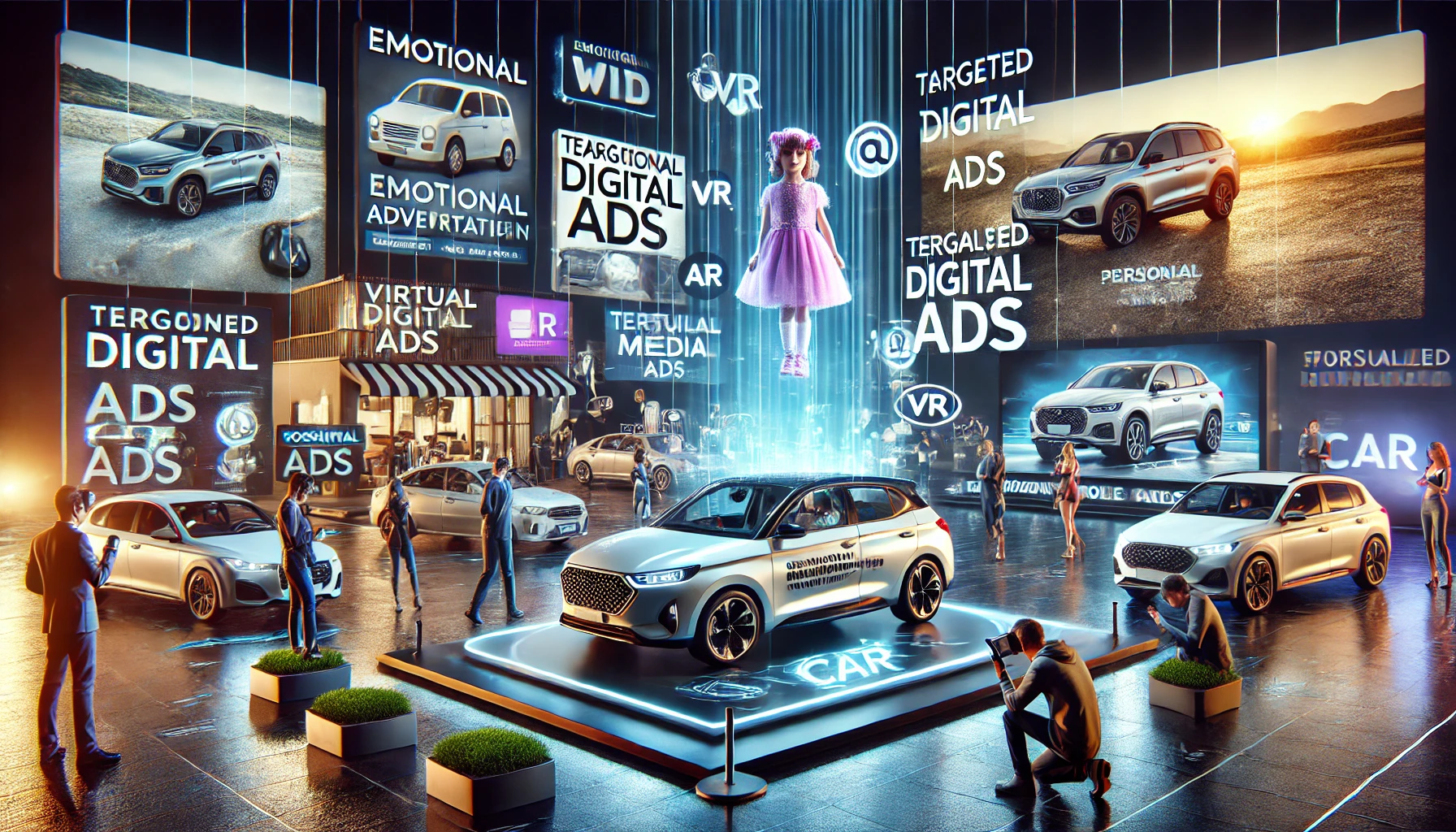Marketing in the automobile industry is a blend of creativity, strategy, and technology. Car manufacturers leverage a variety of marketing techniques to capture the attention of potential buyers and differentiate themselves in a highly competitive market. This guide explores the specific strategies and campaigns that famous car manufacturers have used to create impactful ads and engage consumers.
Key Strategies in Automobile Marketing
- Emotional Appeal and Storytelling
- Innovative Use of Technology
- Targeted Digital Advertising
- Sponsorships and Partnerships
- Social Media Engagement
1. Emotional Appeal and Storytelling
Strategy: Car manufacturers often use emotional appeal and storytelling to create a connection between the brand and the consumer. These ads focus on the experiences, feelings, and lifestyle associated with owning a particular vehicle.
Examples:
- Volkswagen’s “The Force” Campaign:
- Volkswagen’s ad for the Passat, featuring a young boy dressed as Darth Vader, was a huge hit. The commercial tells a heartwarming story of a child trying to use “The Force” on various objects around the house, only to be surprised when the car responds to his command (with a little help from his dad). The ad’s emotional appeal and clever storytelling made it memorable and widely shared.
- Honda’s “Power of Dreams”:
- Honda’s long-running campaign, “The Power of Dreams,” focuses on the company’s innovative spirit and the emotional journey of its engineers and designers. The ads often feature inspiring stories of overcoming challenges and achieving dreams, resonating with consumers on a personal level.
2. Innovative Use of Technology
Strategy: Automobile ads increasingly incorporate advanced technology, such as virtual reality (VR), augmented reality (AR), and artificial intelligence (AI), to create immersive and interactive experiences for consumers.
Examples:
- Audi’s VR Experience:
- Audi launched a VR showroom that allows potential buyers to experience their cars in a virtual environment. Users can customize the car’s features, take a virtual test drive, and explore the vehicle in detail, all from the comfort of their home.
- Toyota’s AR Showroom:
- Toyota’s AR app lets users place a virtual car in their driveway or garage, giving them a realistic view of how the car would look in their space. The app also provides detailed information about the car’s features and allows users to explore different configurations.
3. Targeted Digital Advertising
Strategy: Digital advertising allows car manufacturers to target specific demographics with personalized messages. Using data analytics, brands can create ads tailored to the interests and preferences of different consumer segments.
Examples:
- Tesla’s Social Media Ads:
- Tesla effectively uses targeted social media ads to reach potential buyers interested in electric vehicles. By analyzing user data, Tesla can deliver personalized content and promotions to users who are most likely to be interested in their cars.
- BMW’s Google Ads:
- BMW utilizes Google’s targeted advertising features to display ads to users searching for luxury cars. By using keywords and search behavior data, BMW ensures that their ads reach users actively looking for high-end vehicles.
4. Sponsorships and Partnerships
Strategy: Sponsorships and partnerships with popular events, celebrities, and influencers help car manufacturers increase brand visibility and reach new audiences. These collaborations often involve placing the car in a context that aligns with the brand’s image and values.
Examples:
- Mercedes-Benz and Fashion Week:
- Mercedes-Benz has been a long-time sponsor of various fashion weeks around the world. By associating with high-fashion events, Mercedes-Benz reinforces its image as a luxury brand and reaches an audience interested in style and sophistication.
- Ford and American Idol:
- Ford’s partnership with the TV show American Idol included featuring Ford cars in the show’s episodes and giving away cars to contestants. This collaboration helped Ford reach a broad audience and connect with viewers in a fun and engaging way.
5. Social Media Engagement
Strategy: Car manufacturers use social media platforms to engage with consumers, share content, and build communities around their brands. Social media allows for direct interaction with consumers and the opportunity to create viral content.
Examples:
- Chevrolet’s #BestDayEver Campaign:
- Chevrolet launched the #BestDayEver campaign on April Fools’ Day, surprising people across the country with unexpected acts of kindness. The campaign included celebrity appearances and was heavily promoted on social media, generating significant buzz and positive sentiment for the brand.
- Jeep’s User-Generated Content:
- Jeep encourages its owners to share photos and stories of their adventures using the hashtag #JeepLife. This user-generated content is then featured on Jeep’s social media channels, creating a sense of community and showcasing the brand’s rugged and adventurous spirit.
Conclusion
Marketing in the automobile industry requires a combination of emotional appeal, innovative technology, targeted advertising, strategic partnerships, and social media engagement. By leveraging these strategies, car manufacturers can create impactful campaigns that resonate with consumers and drive sales. From Volkswagen’s heartwarming “The Force” ad to Audi’s immersive VR experience, the automobile industry continues to push the boundaries of marketing to connect with audiences in meaningful ways.
